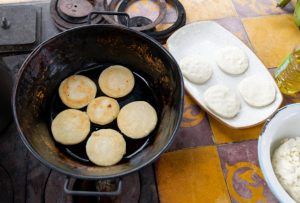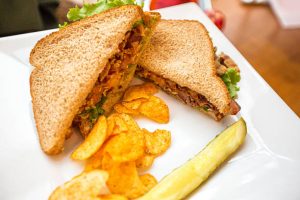
The diversity of food that different cultures offer the world is one of the most beautiful things about them. Each country uses abundant ingredients on its land to create dishes that have become staples of its culture. We are bringing light to the Levant and exploring its culinary world.
If you’re not familiar with this region, the Levant includes several Arab countries which share a similar dialect and culture. It includes Lebanon, Syria, and Palestine. Levantine food is a significant part of Arab cuisine. Tahini, chickpeas, and feta are often added to their dishes for a unique taste.
Others consider Egypt part of the Levant. Egyptian cuisine may look similar to Levantine food, but they are different. The Arabic dialect used in Egypt is different from that of those countries.
You can embark on an exciting culinary adventure across the Arab world by trying the best Levantine cuisine. So, let’s get started!
Levantine Cuisine: Traditional Dishes
Levantine cuisine is similar to other cuisines from around the globe. There are many delicious dishes to love. The Levantine cuisine is unique because of the ingredients and cooking method. Levantine food is very nutritious and has gained popularity around the world. Let’s look at the best dishes from this unique region.
Tabbouleh
Levantine cuisine includes a variety of salads that are high in nutrition and have a delicious twist to them. Tabbouleh, a Levantine salad, is very popular in Lebanon and Syria. The salad comprises cucumbers, tomatoes, onions, parsley, and bulgur. All ingredients are cut into small pieces to make it easier to eat.
The fun doesn’t end here. This salad, rich in nutrients, is spiced with sweet peppers, lemon juice, and olive oil. Some regions may have variations, such as adding semolina or lettuce. This salad is a healthy and nutritious dish with a unique taste.
Fattoush
Fattoush, another famous salad in Levantine cuisine, is an excellent option for vegetarians. It has a delicious flavor and is a good choice. Fattoush, unlike tabbouleh, is more prevalent in Lebanon than in any other Levantine nation. It is consumed by all Levantine communities and beyond.
Fattoush is a salad made up of mixed vegetables and greens. It includes lettuce, tomatoes, and onions. Also had are bell peppers and parsley. The salad is seasoned using lemon juice and olive oil to enhance the flavor. This dish comprises giant vegetables and pieces of bread called “Khubz” in Arabic. Bread is often toasted to add a crunchiness to the salad. Some regions call it “bread salad.”
Shawarma
The word “Shawarma,” which is derived from the Turkish “severe” (which means “to turn” is used to describe this popular Middle Eastern food. The meat is placed in a cone shape and then slowly turned while being cut into thin slices. This is one of the most popular sandwiches in Levantine cuisine. It’s trendy in Syria and Lebanon.
It has been argued that shawarma originated in Turkey during the Ottoman Empire. The food then made its way to the Arab world. Some believe it is Greek, as it is very similar to gyros. Most foodies, if they are not all, agree that shawarma is delicious, no matter where it comes from.
Falafel
Falafels are a popular street food, particularly in Levantine and Egyptian cuisines. These deep-fried balls can be made with either chickpeas or broad beans. Sometimes, the balls are made of both. Falafel is becoming more popular because it fits most vegetarian and vegan diets.
It needs to be clarified where falafel originated, though many claim it’s an Egyptian dish. Others say it’s a Levantine food. This doesn’t prevent people from eating these fiber-rich patties that are high in nutrition and can provide satiety anytime. Falafel is versatile and can be used as an appetizer, midday snack, or even a satisfying sandwich for dinner.
Mana’eesh/Man’oucheh
Mana’eesh, the most popular version of man’oucheh (a typical Levantine dish), is common. In some places, such as Egypt, it is called Fatayer. It is sometimes called Middle Eastern pizza because it is made of dough spread out and topped with various ingredients. Then it goes into the oven for optimum baking. They sound very similar.
Mana’eesh is available in a variety of shapes and sizes. A wide range of ingredients are used to create a delicious taste. Man’oucheh can be topped with ground beef, chicken, cheese, tomatoes, and bell peppers. A vegetarian version is available, which contains only cheese and greens. You can eat it either folded or sliced, like a sandwich.
Kibbeh
Kibbeh, a delicious appetizer served before the main dish, is popular in Levantine and Middle Eastern cuisine. This dish is made from ground meat that has been shaped into small croquette-like shapes and then fried until golden brown.
Kibbeh is a mixture of ground beef, bulgur, and herbs. All of them are ground and mixed with wheat to give the dish its oval-shaped shape. Then it is fried and served with the main dish. This meal is very nutritious as it contains enough protein, minerals, and vitamins to keep the body healthy.
Mansaf
Mansaf, a popular Levantine dish that originated in Jordan, has spread to other parts of the Levant and the Gulf of Arabia. It is so popular that it’s even regarded as the national dish of Jordan. It is easy to confuse this dish with the Saudi Kabsah, but they are very different.
Mansaf, a rice dish with lamb, is served in a vast bowl. The lamb is cooked with a special sauce made of dried yogurt and soaked in a generous mixture of spices. It’s then cooked until it becomes tender. The spices give the lamb a fermented, robust taste that accompanies rice and provides satiety.



